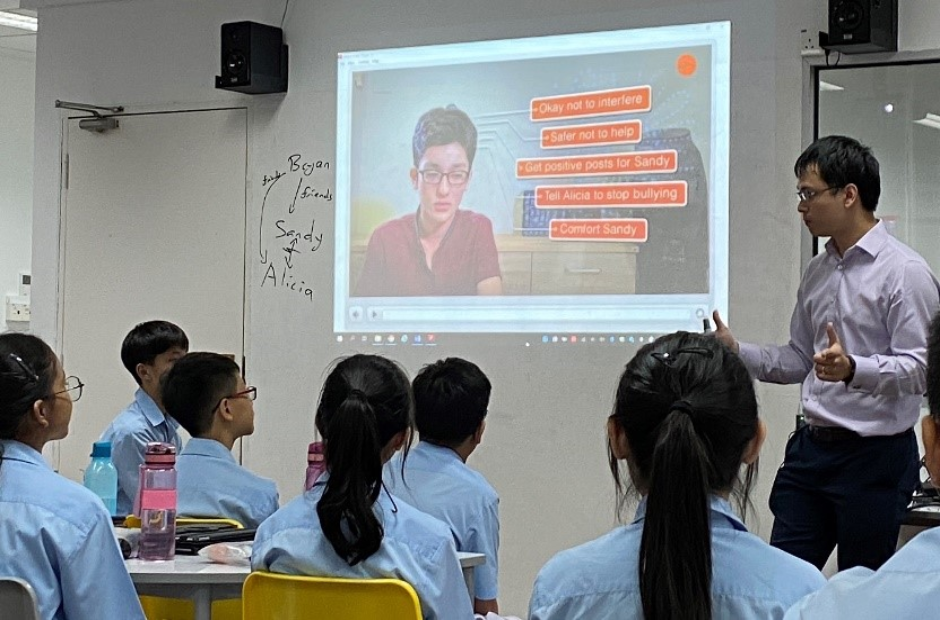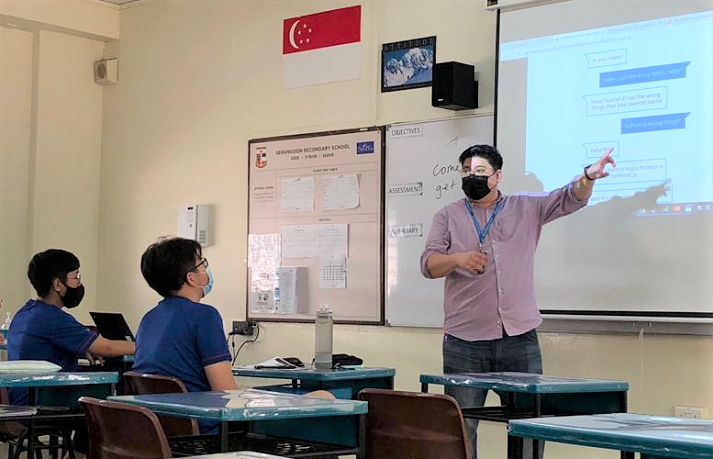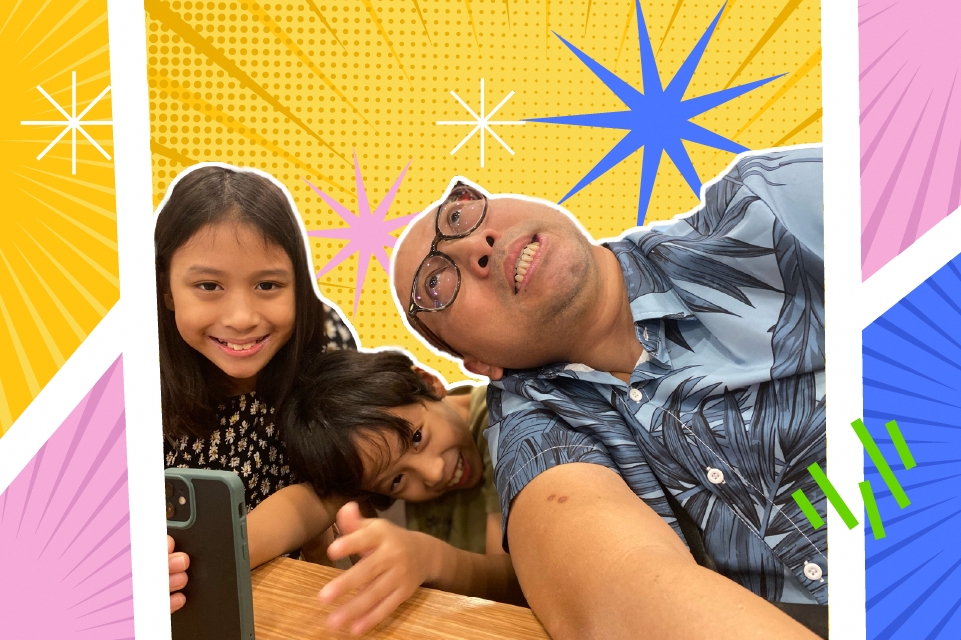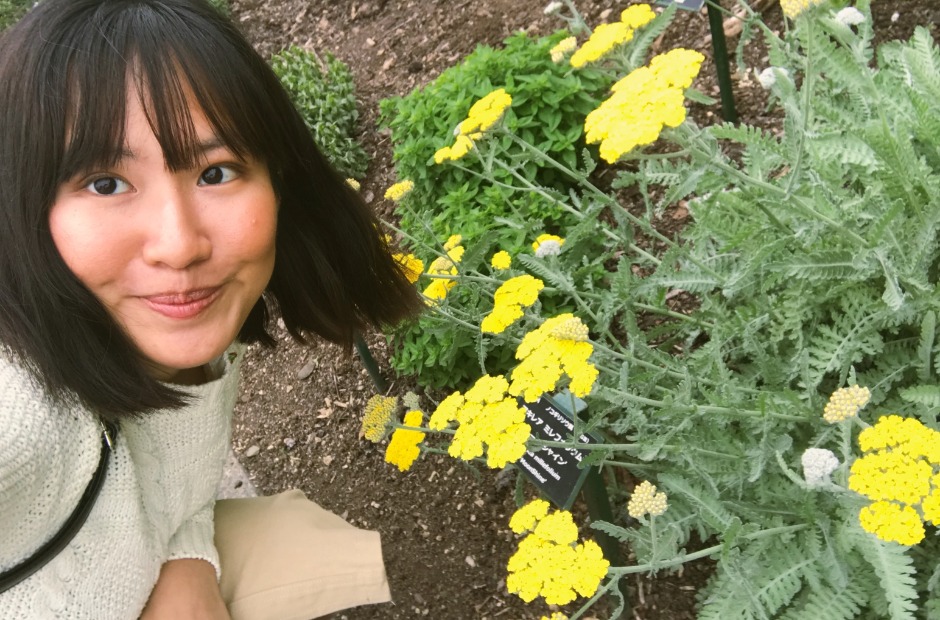Today’s youth are growing up immersed in the world of the Internet from an early age, thanks to growing smartphone usage. Social media and chat apps are fast changing how kids develop relationships and interact with each other.
But while such technology connects people across boundaries and brings them closer to each other; there are also dangers that lurk within, like cyber bullying. And behavioural guidelines in cyberspace are less defined than in real life.
At this year’s Committee of Supply (COS) debate, Minister of Education Ong Ye Kung highlighted the need to strengthen the cyber wellness component in the Character and Citizenship Education (CCE), so that students can better identify and ward off bad influences and conduct themselves as morally upright individuals even when they are in cyberspace
This is not an easy task and it requires educators and students to work closely together.. We visited New Town Secondary School (NTSS) to take a peek at how cyber wellness lessons are carried out.
Inculcating the importance of cyber wellness
At one cyber wellness class, two teachers conducted the lesson with the help of interactive videos. This allows students to have a chance to actively participate and share their thoughts and approaches to a scenario.
In one interactive video, a student is shown receiving mean messages after posting a video of herself dancing, to a social media platform. Her friend comes to know of this and has to decide how to de-escalate the situation: confront the bully himself or tell a teacher.
At this point, the video is paused and students were told to pick from a list of actions they could pursue. The students then walked up to a whiteboard wall in the classroom, which had the different actions listed, and marked their choices.
These thought experiments are engineered to encourage deeper thinking and discussions among students, so that they aware of the possible outcomes and consequences of their actions.
The teachers then invited the students to share the rationale behind their decisions, before resuming the video to display the hypothetical outcome of each decision.
For example, if a student had chosen to intervene by himself, without the help of a teacher, would it have escalated the situation and made things worse for all parties? What if he had informed a teacher instead? By examining these outcomes, the teachers helped students to dissect the rationale behind their decisions.
These lessons may involve heavy and sensitive subject matters, but the discussions were lively. It is easy to get students animated about relatable scenarios and practical tips that they can apply in real life.
“The [cyber wellness] lesson is like a game itself. You can actually find out the outcome so you can learn more on what we can do in the future – it teaches you lessons based on what options you choose,” says Dan Cedric Robles Dimayuga, a Secondary 2 student at NTSS.
“I have learnt how to help someone who is being cyber bullied. I learnt that if you found out your friend is being cyber bullied, it’s better to tell the teacher instead of going upfront to the bully and tell them to stop,” he says.

Dan Cedric Robles Dimayuga, Sec 2 student at NTSS
“Because if you go upfront to the bully, you may cause a physical fight and you may end up getting hurt. But if you refer to, let’s say a school counsellor, who is more steady and calm, the problem will be solved better.”
Dimayuga says the cyber wellness lessons have changed the way he conducts himself in the cyber sphere. For example, he is now more judicious of the materials he posts online.
“I am now aware of what I should do in the cyber world…I think that, whatever we post or whatever we do online, we must think first, because it may affect other people’s feelings.”
Measuring effectiveness and managing students’ emotions
Miss Rozaina binte Rusli, Head of Department (HOD) for Student Welfare at NTSS, is a facilitator in these cyber wellness lessons.
She says that the facilitators track how students respond and make decisions within these scenarios to gauge whether their lessons have been effective. Today, she says, thanks to these lessons, the students are more adept at handling issues pertaining to cyber wellness.

Miss Rozaina binte Rusli, Head of Department (HOD) for Student Welfare at NTSS
“We do have students coming forward and actually sharing their stories. For example, students bring their friends, who might have been a victim of cyber bullying, to a school counsellor. So these are good stories that show how they have understood the lessons,” says Miss Rozaina.
However, it is still a relatively new field of study and facilitators may encounter obstacles along the way. These are sensitive issues and discussions may become emotionally charged and rile up students.
“I’ve had students get upset because they don’t agree with what that friend has shared,” she says.
To manage this, Miss Rozaina says it’s important to remind students that the cyber wellness classes are a safe space for students to share their thoughts without fear of judgement.
“When we are successful in creating a safe space for discussion through collaborative norms and teachers are effective in facilitation, students are more open to share their personal stories,” she says.
A set of guidelines known as “Collaborative Norms” are also written on one of the classroom’s walls to remind students that they are in a safe space and are afraid to voice their opinions.
“Collaborative Norms are a set of ground rules to facilitate a space for learning and sharing. These norms are co-constructed with the students. In our school, we have posters of these norms in each classroom and at the start of each CCE lesson, teachers will check in with the students to remind them to be guided by these norms,” says Miss Rozaina.
There are generally five collaborative norms, she says. They are:
- Let everyone have a chance to share
- Listen actively
- Respect everyone’s opinion
- Honor confidentiality
- Any others the class would like to add on (“Usually my classes will add ‘Have fun!’,” says Miss Rozaina).
“Emotions are normal, you may cry, you may get upset, but let’s come back to the Collaborative Norms. you participate actively and you respect everyone. You may put forward your ideas, but how you put forward is important. We are not saying that your idea is wrong, but let’s respect one and another and say it properly,” says Miss Rozaina.
“When we are successful in creating a safe space for discussion through collaborative norms and teachers are effective in facilitation, students are more open to share their personal stories,” she says.
Building up facilitators’ capabilities
“You must be prepared for anything and everything, because the nature of these [cyber wellness] lessons allows students to share []. There are multiple perspectives,” says Miss Rozaina. And facilitators may get stumped if he or she does not know how to respond to these varying views, she adds.
In NTSS, “all teachers are trained in facilitation skills to conduct effective teaching and learning of CCE lessons,” she says. A core team of teachers design effective lesson packages that help teachers facilitate classes where students are encouraged to share multiple perspectives.
Still, there will be challenges. For example, students and teachers may not have the same level of cyber knowledge and experience, leading to vastly different views on certain cyber issues. For example, “adults will not understand why it is so important to receive ‘likes’ on a social media post,’ says Miss Rozaina.
“How teachers respond to such challenges will ultimately be based on their expertise and experience. During our in-house training, we get teachers to share their challenges in conducting the cyber wellness class and look into addressing them as a team,” she says.
All in all, Miss Rozaina is optimistic about the future of cyber wellness education, and believe that with the increased emphasis on it in CCE, students will be able to appreciate its importance.
“We welcome the recent announcements on how CCE lessons will be more integrated in future and mental health being included more intently. Students need to see cyber wellness not as an individual segment that needs to be learnt but it is part of their entire CCE learning experience.
“When we do not segmentise cyber wellness, they will be able to understand better the bigger picture and how cyber wellness can relate to their overall self-esteem and mental wellness,” says Miss Rozaina.






